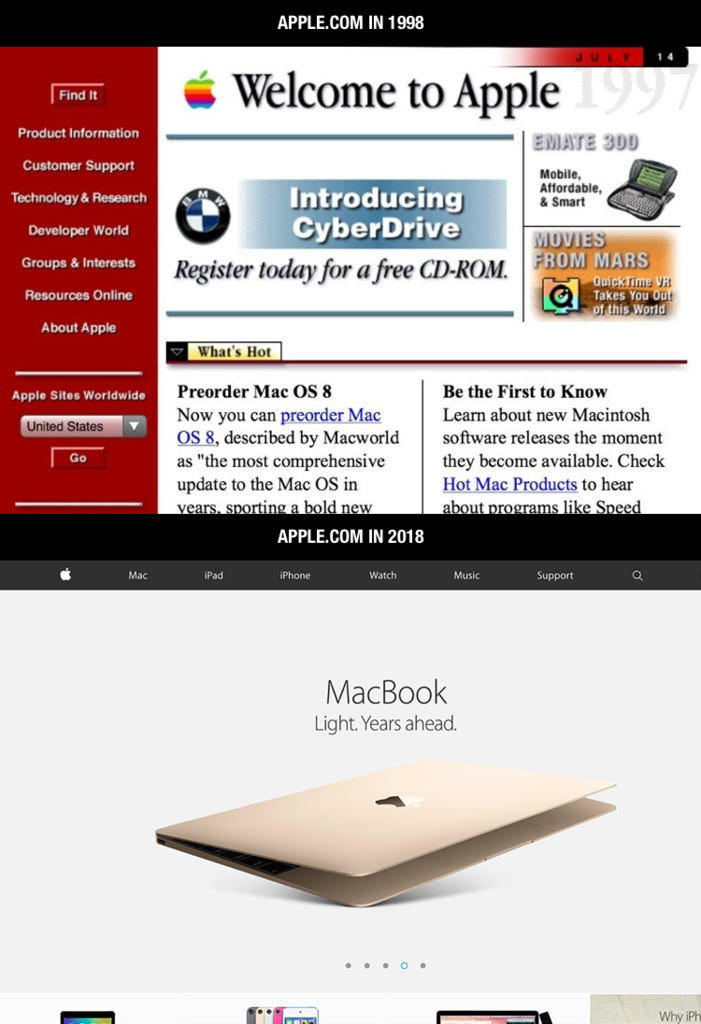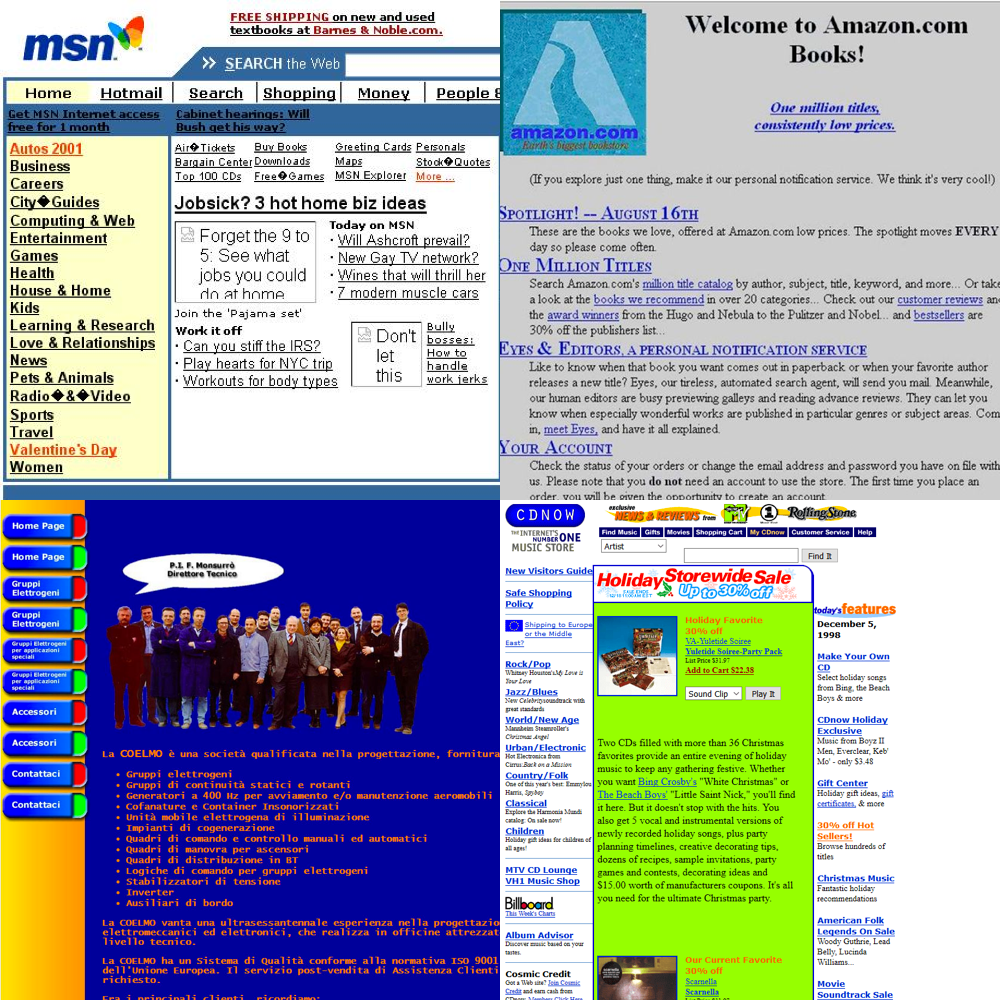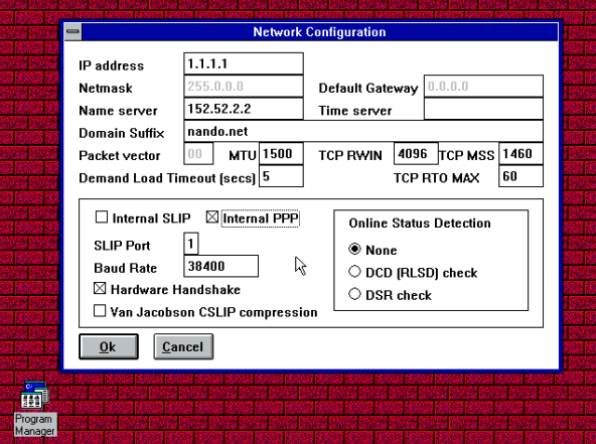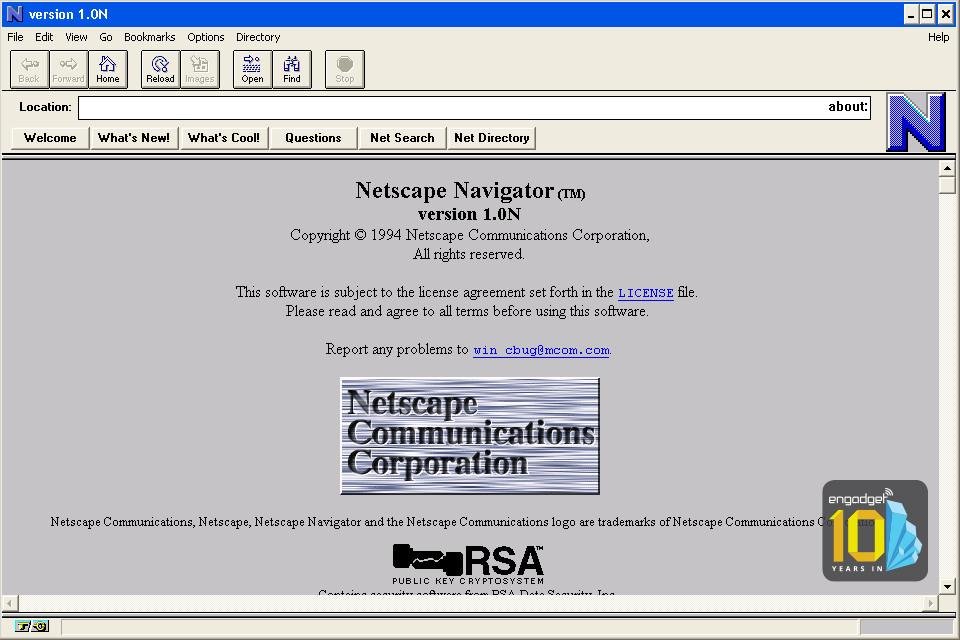

WEB DESIGN IN THE 90s
20 years ago, website design was still extremely simple. Prior to 1998, “high-speed” internet connections were not a thing, so it was dial-up or bust. Websites during this era were built for less-than-speedy connection speeds, so they were largely text driven, with very little in the way of design layout.
By the mid 90s, graphic design elements were growing in popularity; animated text, dancing GIFs, and page counters were key design features of this period, and designers began to use table based layouts to organize content in terms of structure and appearance.
Design, while still basic, became somewhat more aesthetically pleasing during this period with the advent of table layouts — which allowed for improved design capabilities, and paved the way for current era embeds, columns, and more visually appealing design features. For a visual reference point, check out what some famous websites looked like in 1998 here.

HOW COMPLICATED WAS IT TO BUILD A SITE?
The inherent complexity of building a website in the mid to late 90s was no small thing. Back in the days when setting up a website was akin to building a storefront brick by brick, costs were also something to contend with.
According to Benj Edwards via Fast Company, “Buying a TCP/IP stack for Windows cost anywhere between hundreds and thousands of dollars.” Edward’s description of building his first website mid 90s sounds archaic and maddeningly complex by today’s standards — “Connecting graphical applications to the web proved complicated in the era between early 1993 and mid to late 1995 because, at the time, TCP/IP networking was not a native part of Windows 3.11. Users had to provide their own TCP/IP stack, the software that allowed your local computer to speak TCP/IP. On top of that, you needed a PPP utility.”

GETTING WEB TRAFFIC IN THE 90s
So once you completed the near herculean task of building a 90s website, how did you get people to find it prior to the era of Google and social media marketing? Before Google became everybody’s default search engine, web searches were powered by Yahoo, AltaVista, Internet Explorer, or Lycos, among others like Ask Jeeves and AOL. In 1998, Yahoo was considered pretty great — after all, it had a page load time of three seconds, which is slow by today’s standards, but pretty solid for 1998.
In the pre-social media era 90s, content marketing still ran along the lines of traditional marketing techniques; if you wanted your message to find its way to your audience, you had to place ads on billboards and TV, in newspapers, magazines, message boards, and radio. And depending on your budget, this could mean your reach was pretty limited. In the early 90s, print marketing materials like brochures and faxes (for B2B) were popular. Joe Cordo, CMO of WegoWise told Kaleigh Moore for SnapApp that “Public relations in B2B made product brands, and often drove valuations of companies. Front page print coverage and product reviews drove a product to brand leadership.” He further explained that “that doesn’t mean it was all good. An overemphasis on PR created brand perception rather than healthy demand. Good products didn’t necessarily achieve the market presence they should have. The web and data-driven digital marketing in the 2000s changed all of that for the better.”
So while the internet as we know it has been around since the 80s, it didn’t become a powerful marketing tool until the advent of Netscape in 1994. With the Netscape browser, businesses started to build and use websites as a way to capitalize on marketing reach — revolutionizing the way companies approached marketing. In 1998, Google was launched, but it would take some years before it surpassed Yahoo and AOL as the web’s most popular search engine.

THE INTERNET IS ALWAYS CHANGING
The internet is always changing, and there are so many reasons why that’s a good thing. A big budget and major tech abilities are no longer required for optimizing your marketing reach via a well-constructed website. Not only is it easier and cheaper than ever to create your own website, it’s even easier to advertise it — omnichannel marketing via tools such as social media, email marketing, Google ads, and LinkedIn have exploded the way businesses can get their messages and products out to their potential consumers. While it’s kind of charming to look back on the early days of website creation and old school marketing methods, I definitely won’t be asking Jeeves how to build my next website.
